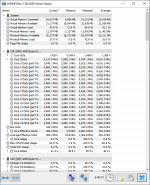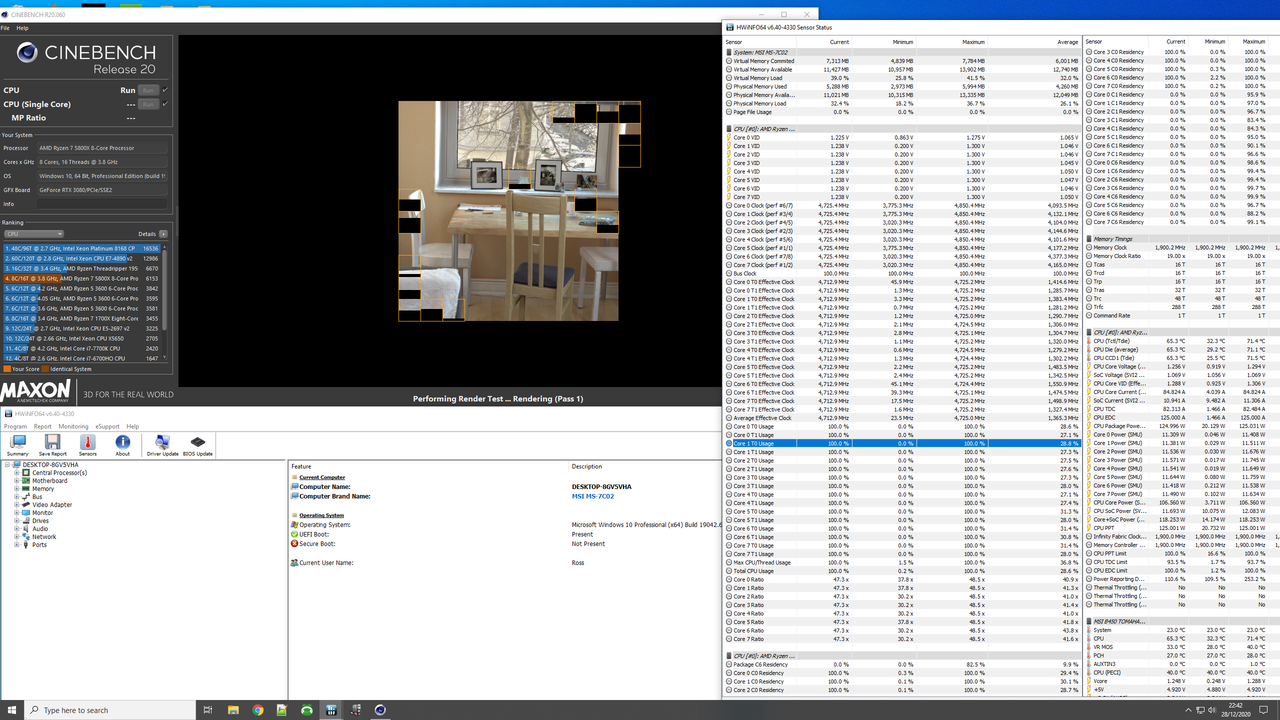Associate
Hi,
Got my 5800x last week. Spend some time reading about undervolting for more performance with less voltage and temps. Been playing around for a while now but something seems off.
System:
5800x (arctic liquid freezer ii 360)
Gigabyte X570 pro (latest bios)
16gb 3200mhz cl14
Latest win updates + chipset drivers etc.
I managed to get the following stable vcurve offsets:
-8
-30
-30
-30
-30
-5
-30
-5
Did set a +100mhz boost. Can prob. run 150-200mhz.
Measuring my vcore with hw64info, something seems off. At stock my vcore in multithreaded apps is hovering around 1.33v. With vcurve enabled I should see way lower voltages but with the above vcurve set I'm seeing it hovering around 1.33-.135v in multicore benches.
Also, It's running around 4.55 ghz in multicore benches. Although hw64info says it's running @ 4.75. But when looking in Ryzen master and task manager both display ~4.5.
My cinebech mc score = 6050 (same or even less then stock)
My single core score = 640
Temps are no problem at all. Staying below 75 degrees celcius all the time.
I'm wondering why it seems to be stuck at 4.5 ghz all core and running 1.35v while having this much offset already. Even so, stock settings have the same or even less voltages.
Could this be a bios problem? Anyone else with a gigabyte mobo running F33?
Thanks!
Got my 5800x last week. Spend some time reading about undervolting for more performance with less voltage and temps. Been playing around for a while now but something seems off.
System:
5800x (arctic liquid freezer ii 360)
Gigabyte X570 pro (latest bios)
16gb 3200mhz cl14
Latest win updates + chipset drivers etc.
I managed to get the following stable vcurve offsets:
-8
-30
-30
-30
-30
-5
-30
-5
Did set a +100mhz boost. Can prob. run 150-200mhz.
Measuring my vcore with hw64info, something seems off. At stock my vcore in multithreaded apps is hovering around 1.33v. With vcurve enabled I should see way lower voltages but with the above vcurve set I'm seeing it hovering around 1.33-.135v in multicore benches.
Also, It's running around 4.55 ghz in multicore benches. Although hw64info says it's running @ 4.75. But when looking in Ryzen master and task manager both display ~4.5.
My cinebech mc score = 6050 (same or even less then stock)
My single core score = 640
Temps are no problem at all. Staying below 75 degrees celcius all the time.
I'm wondering why it seems to be stuck at 4.5 ghz all core and running 1.35v while having this much offset already. Even so, stock settings have the same or even less voltages.
Could this be a bios problem? Anyone else with a gigabyte mobo running F33?
Thanks!





